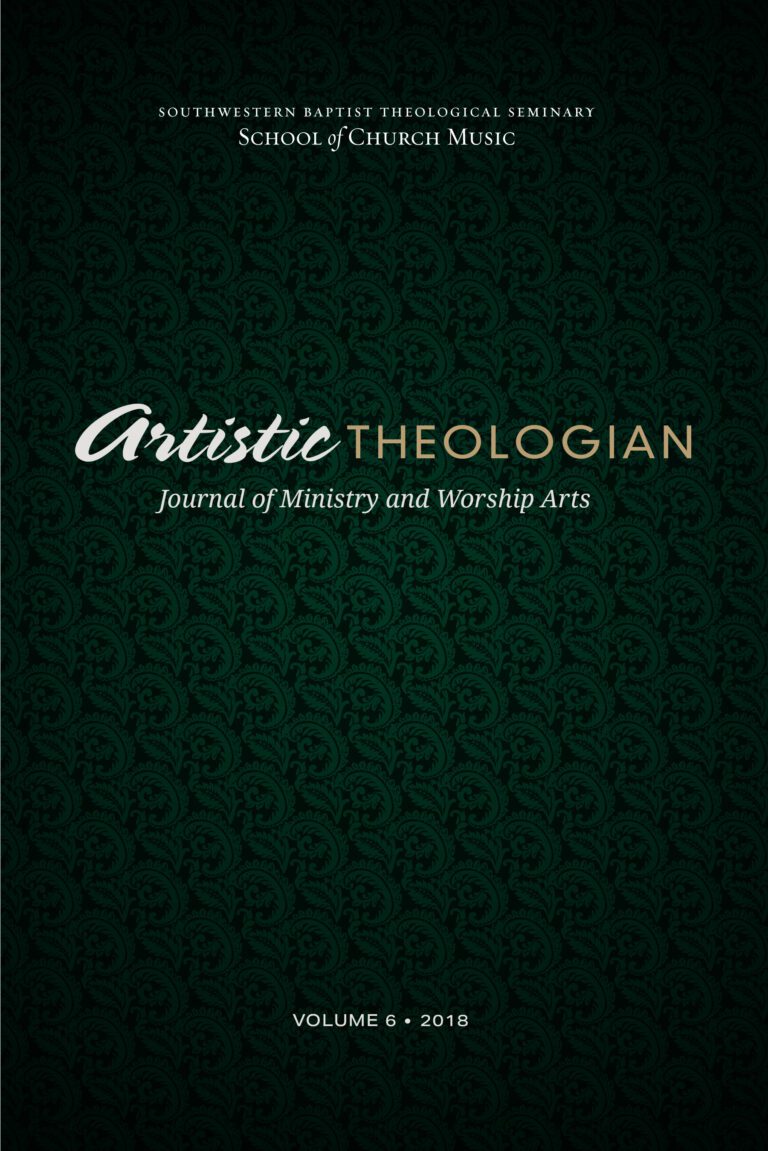
When We Come Together
Artistic Theologian
Volume 6, Summer 2018
Editor-in-Chief: Scott Aniol
Singing God’s Psalms: Metrical Psalms and Reflections for Each Sunday in the Church Year, by Fred R. Anderson. Grand Rapids: Eerdmans, 2016. 239 pp. $24.00.
Today the Psalms of Scripture are mostly read, either aloud in church or silently in one’s private devotional time; however, they were originally intended to be sung. With that in mind, Fred R. Anderson has paraphrased a number of the Psalms into metered text for use in congregational singing. Anderson is a hymn writer, liturgical theologian, and pastor emeritus at Madison Avenue Presbyterian Church in New York City.
Anderson’s collection includes metrical paraphrases of all the Psalm texts contained in the Revised Common Lectionary. The author provides the hymn meter for each setting, as well as a list of anywhere from one to five possible hymn tunes that may be used with the text. Each text also includes a brief reflection on the original Psalm in which he discusses the original context, use, and any literary devices in the original text. Also included in the collection are metrical settings of some of the canticles found through Scripture, including the Song of Hannah, Song of Mary, Song of Zechariah, Song of Simeon, two hymns from Isaiah, and one hymn from Lamentations.
For music directors who want to incorporate Psalm texts into their church’s singing, the metrical paraphrases will be of primary interest. The paraphrases work very well as hymn texts, fitting comfortably with the tunes Anderson suggests; they also remain quite faithful to the original Psalms, so those looking for biblical, theologically rich texts will not be disappointed. He consciously sets to use inclusive language in his paraphrases, avoiding “masculine references . . . used for the human family” and masculine pronouns referring to God (x). This may be off-putting to conservative Christians, but it must also be noted that he does retain the biblical language of “King” and “Lord” to refer to God as they “are so thoroughly biblical that they were not to be avoided” (xi).
In some cases he has slightly altered the Psalm to be more appropriate for congregational singing. For example, the original text of Psalm 2:7 is from the point of view of the king, and reads “I will tell of the decree: the Lord said to me” (ESV). Anderson has changed this to the third-person: “God’s decree unto the King/Tells us what the Lord did say” (5). Changes such as this retain the meaning of the Psalm, but church leaders should nonetheless use wisdom when deciding if these paraphrases are faithful enough to replace the reading or chanting of the original Psalm text entirely, or if they should be used only as supplements.
Non-musicians may have more interest in Anderson’s reflections on each Psalm text, as might pastors preparing sermons. These cover a variety of topics relating to each Psalm, including historical significance (such as by whom it was written and why), significant theological details (especially any relationship to Christ’s coming), and poetic devices used in the original Hebrew. He also includes some thought on modern application. In his reflection on Isaiah 58:1–12, for example, he draws parallels between the worshiper in biblical days who sees worship only as “an attempted quid pro quo” and the modern Christian who fasts during Lent “more to lose weight than to draw . . . into a more intimate and dependent relationship with God” (230).
Anderson’s liberal leanings become more obvious in his reflections on the texts, calling into question some long-held beliefs on Scripture’s authorship; he claims, for example, that Psalm 8 is “much older than the first creation account” and that the idea of humanity created in the imago Dei stems from the language found in this Psalm (11). Even more concerning is the fact that he appears to cast doubt on the full veracity of the passion narratives in his discussion of Psalm 22: “It is easy to see why the infant church found in this psalm prophetic witness to Jesus’s passion, death, resurrection, and eternal rule, and how its influence found its way into the passion narratives” (34). This seems to imply that Jesus did not actually quote this Psalm while hanging on the cross, but that it was added later to the narrative by the author. While this will hardly undermine the truth of the Gospel, it may be problematic for conservative Christian readers.
Those simply wishing to read about the Psalms may want to look elsewhere, as the discussions on each Psalm are quite short and reflect Anderson’s particular theological leanings. However, for those looking to revitalize their congregational singing with well-written Psalm paraphrases, this book will prove to be an invaluable resource.
Aaron Walton
Southwestern Baptist Theological Seminary





